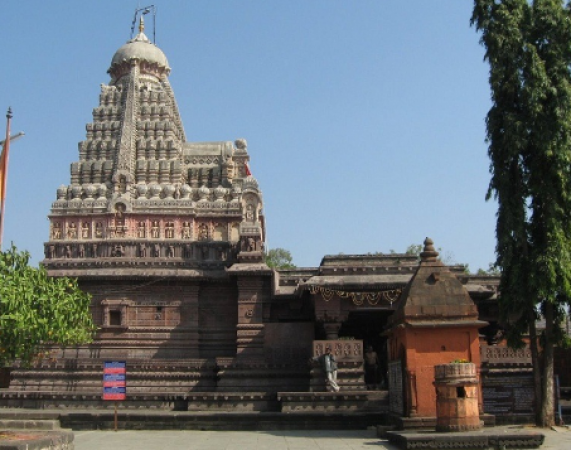
Grineshwar Jyotirling, also known as Grishneshwar or Ghushmeshwar Jyotirling, holds a significant place in Hindu mythology and is revered as one of the twelve Jyotirlingas, the most sacred abodes of Lord Shiva. Situated in the village of Verul, near Aurangabad in Maharashtra, India, this ancient temple attracts countless devotees and tourists seeking spiritual solace and architectural marvels alike. Grineshwar Jyotirling stands as a testament to the enduring devotion and spiritual significance of Lord Shiva in Hinduism. With its rich history, architectural splendor, and divine ambiance, the temple attracts countless devotees and tourists seeking solace, enlightenment, and blessings from the divine.
ALSO READ - What are 12 Jyotirlings in India: A Spiritual Pilgrimage
According to Hindu mythology, the tale of Grineshwar Jyotirling dates back to the ancient times of the Treta Yuga. It is said that a devout couple named Sudharma and Sudeha resided in the village of Verul. While Sudharma was a pious devotee of Lord Shiva, Sudeha was a staunch devotee of Goddess Parvati. Sudeha was the sister of a wicked and jealous king named Sudharmasena. Due to Sudharma's devotion, Goddess Parvati blessed the couple with a beautiful son. However, Sudharmasena, driven by envy, killed the child and threw him into a lake. Deeply grieved by this tragedy, Sudharma continued to worship Lord Shiva with unwavering faith and devotion. Touched by his devotion, Lord Shiva appeared before him and granted him a boon, resurrecting his son and promising to reside there eternally in the form of a Jyotirlinga.
ALSO READ - First Batch of Amarnath Yatra Leaves from Jammu Base Camp
The Grineshwar Jyotirling temple complex stands as a marvelous architectural masterpiece that showcases the rich heritage and craftsmanship of ancient India. The temple's structure is built in the Hemadpanthi style of architecture, which flourished during the Yadava dynasty's rule in the 13th century. The temple's entrance is adorned with intricately carved sculptures and a majestic Nandi (the sacred bull and vehicle of Lord Shiva) statue. The main sanctum houses the Jyotirlinga, a phallic representation of Lord Shiva. The lingam is believed to be self-manifested, emanating divine energy and radiance. The sanctum is surrounded by beautifully carved pillars depicting various mythological stories and scenes from Hindu epics. The temple complex also includes other shrines dedicated to Goddess Parvati, Lord Vishnu, Lord Ganesha, and other deities of the Hindu pantheon. The serene ambiance and spiritual aura of the temple make it an ideal place for meditation, prayer, and seeking blessings.
Grineshwar Jyotirling holds immense religious significance for devotees of Lord Shiva. It is believed that a pilgrimage to all twelve Jyotirlingas helps attain spiritual liberation and blessings from Lord Shiva. Devotees from all over the world visit Grineshwar Jyotirling to seek the Lord's blessings, offer prayers, and perform religious rituals. The temple becomes particularly vibrant during the festival of Maha Shivaratri, which is dedicated to Lord Shiva. Thousands of devotees gather at the temple to celebrate this auspicious occasion, engaging in devotional singing, fasting, and night-long vigils.
ALSO READ - Badrinath and Kedarnath: Majestic Spiritual Retreats in the Himalayas